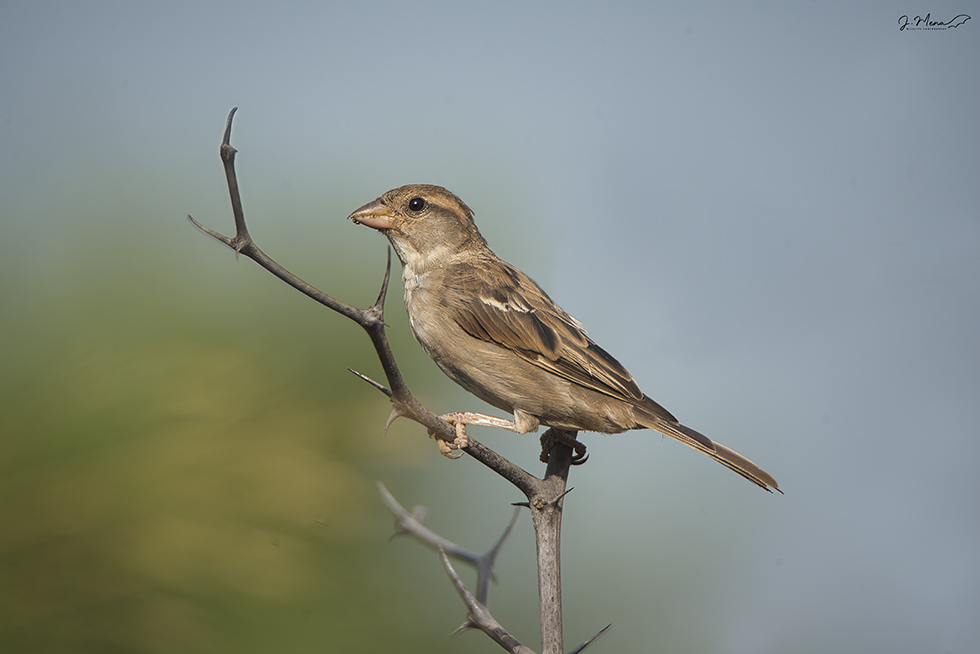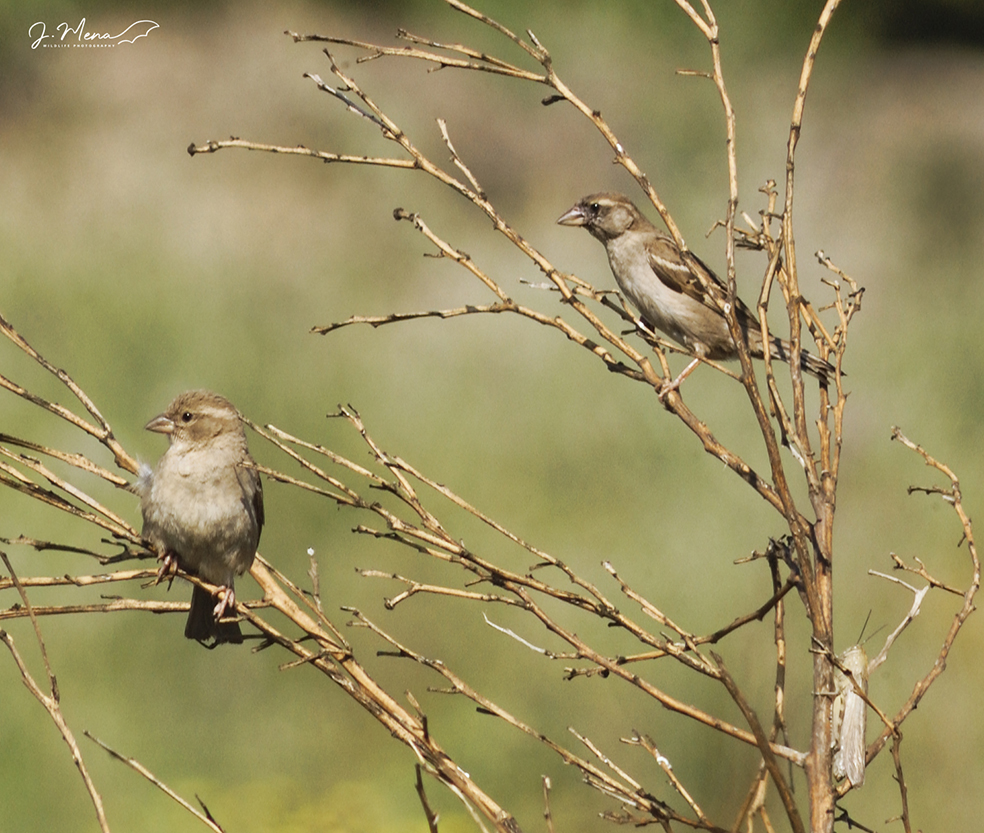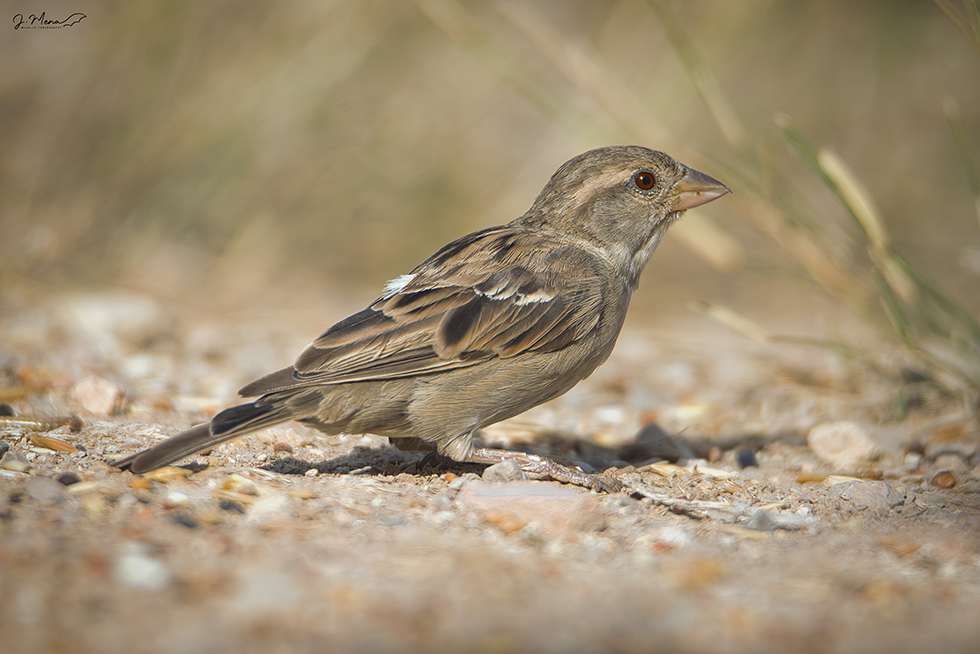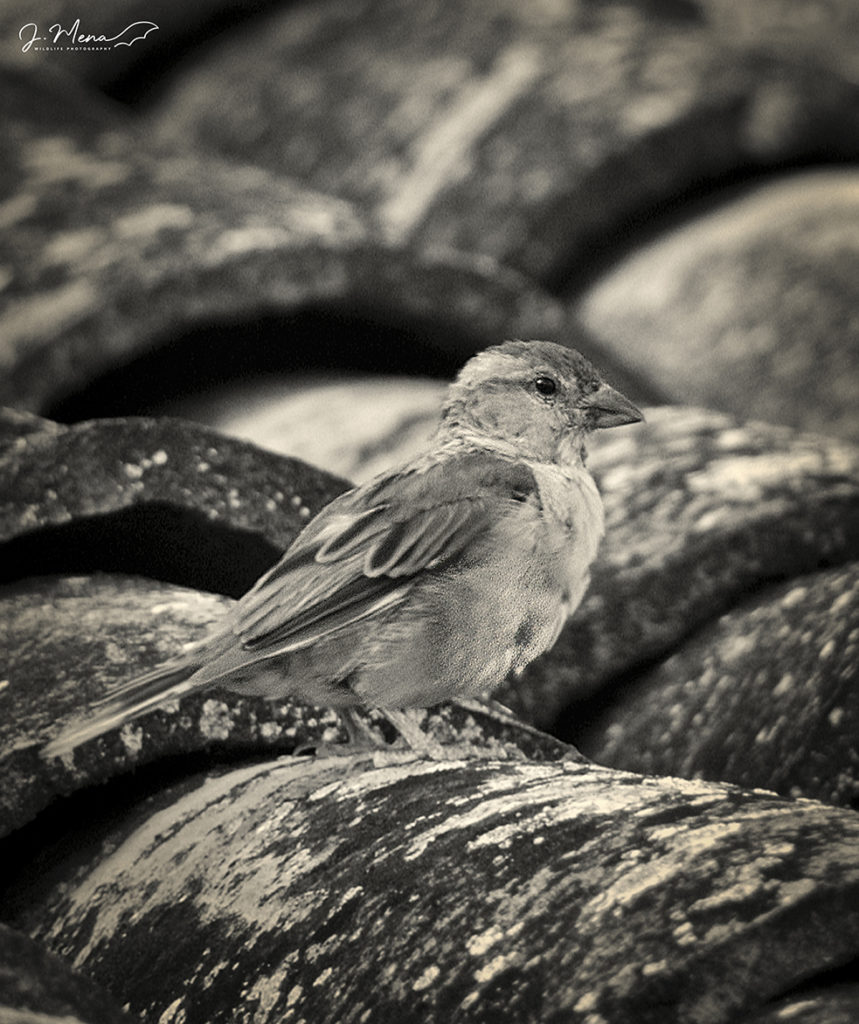Passer domesticus

The house sparrow (Passer domesticus) is an emblematic bird of the Spanish urban landscape, extremely linked to man who has always been with us and which is now experiencing a marked decline in its populations. There used to be more sparrows in the streets of cities and towns throughout Spain. It is scarce in places where there are no towns and is absent in higher altitude areas and in forests without any type of human construction. But that balance that existed between humans and sparrows seems to be breaking down and its decline reveals that we have a global environmental quality problem.

The house sparrow weighs about 30 g and measures 14 to 16 cm in total length (the male is usually slightly larger than the female). It is robustly built and has short legs. Its beak is thick, strong and conical, granivorous type.
Its basic diet consists of seeds, both wild and cultivated, although due to its character as a commensal it takes advantage of waste produced by humans, and in some areas it feeds almost exclusively on them. In the warm season it feeds on insects, mainly locusts and grasshoppers, in whose capture it specializes, feeding its chickens almost exclusively with them.
The species has clear sexual dimorphism. The male has a gray crown (top of the head), black mask and bib, and bright brown temples and nape. The female, however, has a more uniformly colored head, in shades of beige, with an eyebrow of variable color, which is sometimes barely noticeable. Both sexes have a light, almost white underside. Also in both sexes the back is brown, more contrasting in the case of males.
The breeding season is long. They build nests in spring, with dry leaves, feathers and scraps of paper. They nest in cracks in buildings or under tiles. They lay four to five eggs in each clutch. They can lay up to four eggs, and these can happen at any time during the summer period.

The house sparrow is therefore, along with the common swallow, a symbol of our towns and fields. Now we are running out of them, and although they are not as charismatic as other species such as the lynx or the imperial eagle, they are still less important.
One of the main causes of its decline is the lack of nesting sites. Being a cave-dwelling bird that breeds in holes or cavities, modern cities with their glass buildings and cement plate structures with completely hermetic roofs prevent its reproduction in large sectors, as well as the restoration of old buildings where any hole is plugged.
Other reasons, especially in large cities, would be noise pollution, gases, the use of herbicides and the absence of green areas, where the sparrow finds insects to feed its young.
It also has to compete against species that are increasingly abundant in urban centers such as pigeons and introduced species such as parrots.

Faced with this problem, each of us has our responsibility, and there is much we can do for a bird that has always been so present in our lives to which we have barely given the attention it deserves. A few simple daily gestures on our part, such as installing a nest box in our house or garden, providing them with food and a water fountain with clean water, will be enough to help them in these difficult times they are going through.
There is nothing worse than letting what is part of you die, being able to avoid it. If we don’t do it, within a few years they will reside in oblivion and we will barely realize that we are erasing memories of our childhood filled with sparrows and life.

Playing his song:
“The sparrows are the children of the air, the children of the suburbs, squares and small squares of space. They are the poor people, the working masses who have to solve the problem of existence every day in a heroic way. Their struggle to exist in the light, to fill the grim silence of the world with tweets and commotions, is a joyful, determined, inalienable struggle. They reach, to conquer the necessary crumb of bread, to places where no other bird reaches. They are seen in the most corners. separated. They are heard everywhere. They run all risks and dangers with the grace and security that their perpetual childhood has given them.” (Miguel Hernández, “The sparrow and the prisoner. Unfinished story”).

